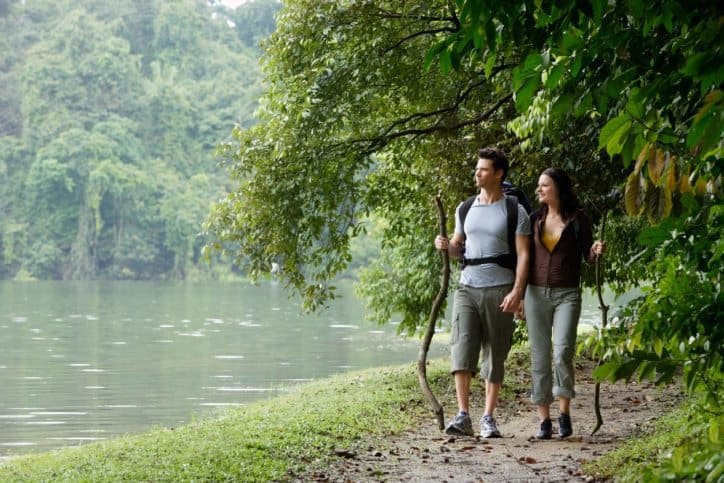Forest Therapy: Being in Forest is Healing

Connecting with nature has always been beneficial for our lives. Now, a new type of treatment, forest therapy, is examining the ways in which massive green spaces can heal us.
Shinrin Yoku (Forest Bathing)
Last year, Outside Magazine featured an article on shinrin yoku or “forest bathing,” a growing health trend in Japan since 1982. With forest therapy individuals spend time in the woods walking, reflecting, relaxing, and meditating for better overall health. According to the author, Florence Williams, forest therapy is based on ancient practices of allowing nature to sink into our five senses.
Forest therapy has many benefits, especially for those living in urban areas. According to ongoing research, living in urban environments can affect your mental health and cause stress, mood swings, and anxiety. Fortunately, experts have found that those who spent time in Japan’s therapeutic forests lowered their cortisol (the stress hormone) levels, blood pressure levels, and increased the activity of natural killer (NK) cells which wards off infection and fight cancer.
Lowering stress levels is important in Japan as the country recently suffered through stressful disasters like the 2011 earthquake and tsunami. Long workdays and congested cities also affect stress levels. Over 10 percent of the country (13 million of the 128 million population) live in Tokyo, which is said to have the world’s worst commute. And Japan has “one of the world’s highest suicide rates,” with roughly 30,000 deaths per year. Thus, stress-relieving measures like forest therapy have become essential for Japan; in fact, Williams says they plan to designate 100 forest therapy sites in 10 years.
Healing Forests in America
Japan’s forest therapy research is crucial for stressed individuals around the world too. According to data from the U.S. Census, a majority of Americans, 80.7 percent, live in urban areas. And 20 percent of Americans are now experiencing extreme levels of stress. While forest therapy is popular in Japan, it’s future in America is uncertain.
With the recent U.S. recession, many government agencies will have their budgets reevaluated and possibly cut. In the past, the United States Department of Agriculture and its sub-department, the United States Forest Service, feared budget cuts valued in the millions or even billions. If their budget is cut in the future it could be devastating to protected green spaces around America and effect potential programs like forest therapy.
If you want to learn more about eco-therapy or if you don’t have access to a forest, there are other steps you can take reap health benefits from your environment. Consider reading this Mindful article on Eco-therapy.


